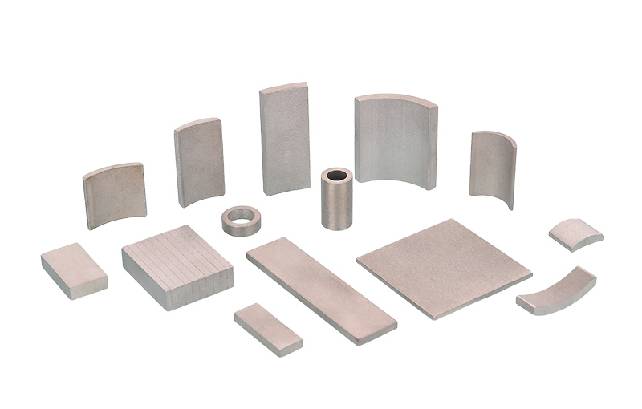Magnets are divided into two categories: permanent Magnetsand soft magnets
neodymium iron boron, aluminum nickel cobalt, samarium cobalt ferrite, magnetic glue, plastic magnet
NdFeB magnet: It is the most widely used and strongest magnetic material, and the price is moderate
Alnico magnet: good temperature resistance, stable magnetic force, mainly used for precision high-tech products such as meters.
Samarium Cobalt Magnet: The performance is similar to that of AlNiCo, and it is mainly used in high temperature field.
Ferrite: The magnetic force is weak, generally 1/10 of the magnetic force of NdFeB. It is bulky, fragile, and can not be electroplated to cause easy oxidation, but its advantage is that it is cheap.
Magnetic glue: mainly used in printing and other industries, composed of rubber and magnetic powder, soft in nature, weak in magnetic force, and low in temperature.
Injection magnet: It is not much different from rubber magnet. The main component is plastic and magnetic powder injection molding. The magnetism is also relatively weak, but it can be processed into various complicated magnetic products in any shape.

Smco Magnet
Magnets whose magnetism can disappear instantly, or magnets whose magnetism is obviously weakened in a short period of time are collectively called soft magnetism.
1.Magnets are magnetic and can attract iron objects.
2.Magnets have magnetic poles, and each magnet has two magnetic poles, N pole and S pole, which exist in pairs.
3.When ferromagnetic materials are magnetized, they tend to lose their magnetic properties and are called temporary magnets (for example: iron); when ferromagnetic materials are magnetized, they are not easy to lose their magnetic properties , It is called a permanent magnet (for example: steel).
4.When two magnets are close to each other, the same magnetic poles will repel each other and push away, and different magnetic poles will attract and stick to each other. So: the same poles repel each other and the opposite poles attract each other.

Copyright © Ningbo Horizon Magnetic Technologies Co., Ltd. All Rights Reserved Sitemap